Everest Expedition update
Most ascent by non-Sherpa guide
A British mountain guide has scaled Mount Everest on Sunday for the 19th time, breaking his own record for the most ascents of the world’s highest mountain by a non-Sherpa guide. Kenton Cool, 51 from southwest England, climb Mt Everest for the 19th time on 18 May 2025 and kept the record of the non-Sherpa climber with most ascents on Everest.
First death of the climbing season
A climber from the Philippines died at camp IV on the 14th May. 45 year old Philipp II Santiago breathed his last at camp IV while preparing for the summit push on the night of 14th. This was the first death of the climbing season 2025.
Efforts were underway to bring his body to the base camp, Bhandari informed.
Route opened up to South Col (7,900 m)
6 - 5 - 2025
On the afternoon of May 5, a team of climbers tasked with establishing a route from Camp II to Camp IV successfully reached South Col. Led by Ashok Lama, the team opened a climbing route up to 7,900 meters at approximately 4:30 PM. They are now preparing for the final effort to set fixed lines to the summits of Everest and Lhotse next week, contingent upon favorable weather and conditions.
The Expedition Operators' Association Nepal (EOAN) has designated 8K Expeditions to establish routes to the summits of both Everest and Lhotse this season. The team plans to return to base camp for rest before proceeding to fix the rope to the summit of Everest next week, following a review of the weather forecast and strategic planning. Previously, the icefall doctors from the Sagarmatha Pollution Control Committee had opened a climbing route from Base Camp to Camp II by installing ropes and ladders across the hazardous section of the Khumbu icefall.
Use of drone will revolutionize Everest expeditions this year
22 - 4 - 2025
This Year Drones are being employed to transport essential equipment such as ropes, ladders, and oxygen cylinders across the perilous Khumbu Icefall — a treacherous area that Sherpa climbers have skillfully navigated for many years to establish climbing routes for expeditions on the highest mountain in the world, according to a report by CNN Travel.
Airlift Technology, a start-up based in Nepal, has implemented drone technology to assist the 'icefall doctors,' the expert Sherpas responsible for opening and maintaining the climbing path from Base Camp to Camp I, situated at an altitude of 6,065 meters. Although this route spans only 1.8 miles, it requires seasoned Sherpas nearly seven hours to complete. In contrast, a drone can traverse this distance in less than seven minutes.
Additionally, drones play a crucial role in environmental conservation efforts. Airlift Technology recently utilized drones to successfully remove 1,100 pounds of waste from Camp One.
Climbing Everest to break his own redord of 30 successful ascents
Kami Rita, who holds the record for the most successful ascents of Mount Everest, is preparing to climb once more in an attempt to surpass his own record. He currently has 30 successful summits and aims to reach the peak for the 31st time, with the possibility of achieving a 32nd ascent as well. In May of the previous year, he successfully reached the summit twice. His nearest rival for the title of most ascents is fellow Sherpa guide Pasang Dawa, who has accomplished 27 successful climbs of the mountain.
Number of Everest climbers likely to increase in 2025
Number of Everest climbers in 2025 are estimated to go higher than in 2024. While 421 Everest climbing permits were issued in the year 2024, it is estimated that more than 650 climbers may reach the summit of Mount Everest from the Nepalese side, contributing to an overall total of 700 to 800 summits from both Nepal and Tibet. While this figure is anticipated to be significant, it remains below the pre-pandemic peak of 877 summits recorded in 2019. Various factors, such as modifications in mountaineering regulations and rising permit costs, are impacting these estimates.
Everest Base Camp Trek
Solo expedition banned on Everest and other 8,000ers
The newly implemented regulations prohibit solo climbing expeditions and mandate that a guide must be assigned for every two climbers on peaks exceeding 8,000 meters, including Everest. For other mountains, the requirement is at least one guide per group. This marks the conclusion of the era of solo climbing on these high-altitude peaks, irrespective of a climber's level of experience. Whether employing alpine-style or expedition-style techniques, climbers will now be unable to ascend these mountains without the assistance of a support guide. The presence of mandatory guides is expected to not only decrease the number of casualties but also facilitate the location of missing climbers and the recovery of bodies in the event of accidents
Everest climbing permit fee increased
Nepal increased the Everest climbing permit fee from USD 11,000 to $ 15,000 in Spetember 2025, which will not impact this Spring season.
Autumn Season (September - Novermber): From USD 5,500 to USD 7,500
Winter (December - February): From USD 2,750 to USD 2,750
Monsoon (June - August): From USD 2,750 to USD 3,750
Spring (March - May): From USD 11,000 t0 USD 15,000
What our clents say

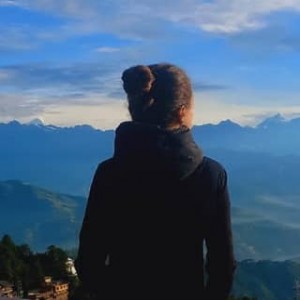
Kathmandu, 5 day's experience !
I came to Nepal from China for 5 days. I decided to stay in Kathmandu. As I am interested in religion, spirituality and nature, I decided to divide my stay…
Read More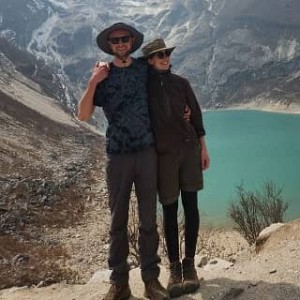
Did it again !
After an incredible trek with them to the Langtang valley in March, they arranged another awe inspiring trek for us to the Manaslu circuit. Rabi created an itinerary that suited…
Read More
Did it again !
After an incredible trek with them to the Langtang valley in March, they arranged another awe inspiring trek for us to the Manaslu circuit. Rabi created an itinerary that suited…
Read More
Did it again !
After an incredible trek with them to the Langtang valley in March, they arranged another awe inspiring trek for us to the Manaslu circuit. Rabi created an itinerary that suited…
Read More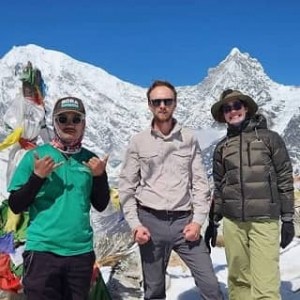
Brilliant Team fantastic trek
Rabi and Prabin provided a fantastic service at great value.
We spent 10 days with Prabin as our guide and we couldn't have been happier - he was professional, knowledgeable…
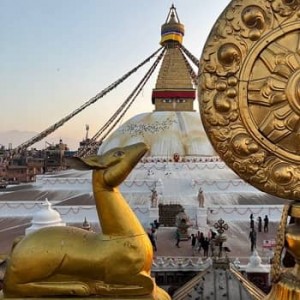
First time in Nepal but hopefully not my last !
Rabi arranged a number of one day short treks for me and a two day tour of Kathmandu. These were either led by Rabi or Prabin. Both are excellent, experienced…
Read More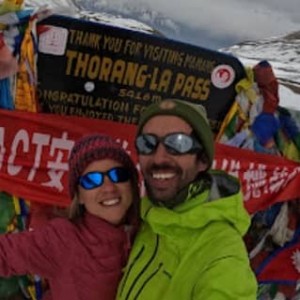
Great Adventure | Professional service
Last month we had the greatest experience of being amazed by the Annapurna circuit. We took the tour w Rabi and his hospitality was outstanding. He organised for us the…
Read More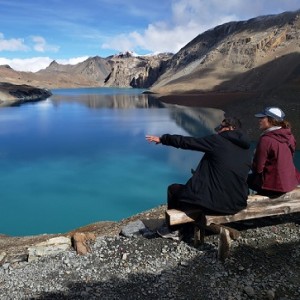
An unforgetable Adventure
My partner and I did a customized 15-day itinerary of the Annapurna Circuit with iTour Nepal and it was one of the best trips of our lives! Rabi was extremely…
Read More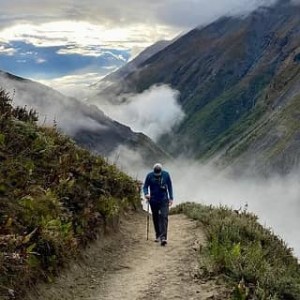
An unforgetable Adventure
My partner and I did a customized 15-day itinerary of the Annapurna Circuit with iTour Nepal and it was one of the best trips of our lives! Rabi was extremely…
Read More
A great Service !
Rabi led our 7 day tour from Kathmandu to Pokhara to Chitwan National Park and back to Kathmandu. He was very responsive during our booking process, super helpful in setting…
Read More
I will be back !
amazing view..good leader, good organizer..recommended executor of the Annapurna Basecamp tour....I will be back on a trip to Nepal by using i tour Nepal again
Read More
Excellent!
It is my second experience with iTourNepal and, as last year, it was EXCELLENT!
iTourNepal is truly an eco and socially responsible tour company focusing on sustainability.
The team is…
Read More
Nepal Bhutan 15 days Tour
Rabi is a fantastic organiser. We had several moving dates during planning, including a major mid-tour reshuffle to include a helicopter trip to Everest Base Camp. We didn't miss anything.
…

Excellent tour of Annapurna base camp
I went for a week-long trek on the Annapurna Conservation area with iTourNepal in April 2022. Great experience, somptuous landscapes.
I am very satisfied with iTourNepal. Ravi was great…

Great Tour in Upper Mustang
This trip in Upper Mustang was wonderful, Rabin is very friendly and attentive. We loved the places we stayed, especially in Lo Mantang. Accommodation was nice everywhere, Rabin and the…
Read More
Outstanding Motorbike Trip to Mustang
Great experience with itournepal, from early stages to completion. We went for a 2 weeks motorbike tour in Mustang, starting from Kathmandu. Rabi managed succes...
Read More
We will be back !
The tour, guides, and porters exceeded all of my expectations. They planned and adjusted our tour to our needs throughout the trek. They were experienced, positive, knowledgeable and so much…
Read More
Namaste Rabi !
Thank you so much for an amazing adventure. You and your team made this an unforgettable experiences. I survived the Annapurna trek thanks to your support and patient. Can't wait…
Read More
A great trekking Operator in Nepal
We were stopping in Nepal for 3 weeks, and we ended up organising all our tours through them.
Rabi & Shiva were absolutely great at organising our tours and…

Wonderful group of people !
We found Anna Nepal Trek on the internet and worked with them to plan several different tours in Nepal. Rabi helped us to plan a trip to see Chitwan and…
Read More
Beautiful and safe experience !
Rabi and Kopila were our Airbnb hosts and were so accommodating. We ended up selecting Anna Nepal Trek due to how great they both are, and Rabi's years of experience…
Read More